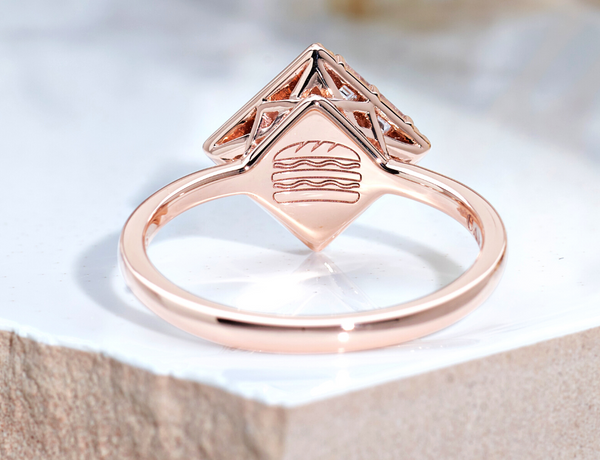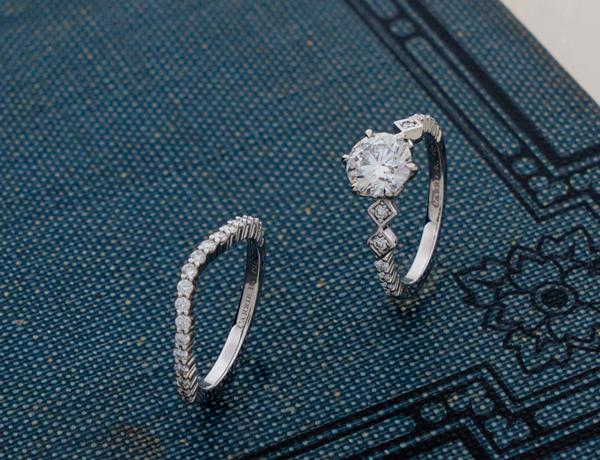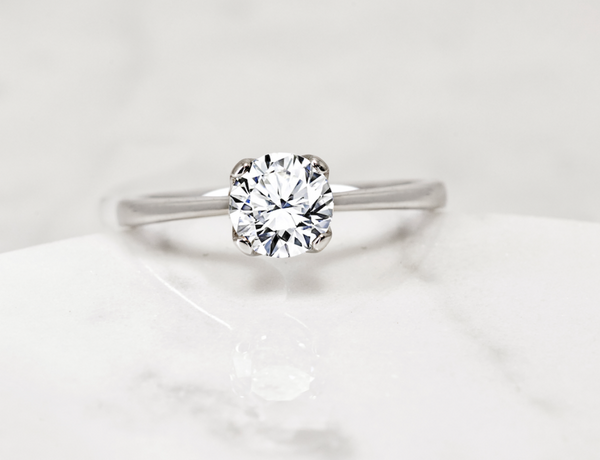Finding the right metal for your ring is just as crucial as selecting the gemstone to be mounted. It affects the overall look of your ring and it can serve to highlight your gemstone or complement your skin tone.
Platinum
Platinum is a naturally occurring metal with a white lustre that gorgeously enhances the brilliance and the fire of diamonds. Comprising 95% platinum and 5% other pure alloys, its lustrous sheen will not fade or tarnish. When compared to all other metals, platinum is the strongest metal that will last you a lifetime.

Since durability is its strongest asset, platinum will blend perfectly into an active lifestyle without worry of any damages and chipping. It is also hypoallergenic, which means it is suitable for all skin types (especially sensitive skin!). With all the qualities working together, they combine to make platinum a superior and winning choice for engagement and wedding rings.
Let's Talk Gold
Did you know?
When we talk about Karats in gold, we are referring to its purity, whilst Carats in diamonds refer to their weight!
Gold is perhaps the most versatile metal and is the most popular choice for wedding rings and karat is the standard measurement for the purity of gold. With 24K being the purest, it is too soft to be made into jewellery so it is often combined with other metals to increase its hardness and durability. The more metals mixed into the gold, the smaller the karats so the more common karats you see in the trade are 18K, 14K and 9K. Depending on the karats you choose, the hardness and the colour of the ring will differ.
Yellow Gold

The traditional choice of metal wedding jewellery, they are classic and timeless. Made up of pure gold, copper and zinc, they give yellow gold its vibrant warmth. The higher the karats of gold, the brighter the yellow. With that, it is also more prone to scratches and dents since the higher composition of gold makes the ring less durable.
White Gold

A more contemporary version of yellow gold, white gold is composed of pure gold, copper, zinc and palladium. Its icy and silvery appearance stems from the addition of palladium and white gold rings are often plated with rhodium to give it a reflective appearance and a brighter shine. The plating is hypoallergenic and works as a fantastic band to complement a diamond. Ultimately, it is still gold, and so the yellowing of the band is inevitable. Be prepared to send your ring to be reconditioned over time!
Rose Gold

Romantic and dreamy, this metal is straight out of a fairytale! The pinkish hue is achieved by combining pure gold with copper alloy and the higher the amount of copper, the more pronounced the red or pinkish hue. Do take note that the high composition of copper is not for wearers with sensitive skin.
The Perfect Setting
The way gemstones are set onto a ring not only determines how they will look, but it also affects the wearer’s experience. Now that you have the basics of ring metals down, why not check out our guide on All You Need To Know About Engagement Ring Settings.
If you would like to find out more, book an appointment with us here. No matter where you are in the world, we would like to celebrate your next milestone in life with you.



